How to reduce hiring costs 20X
10/12/2022
This article originally appeared in our weekly newsletter the Construction Labor Weekly. Join thousands of construction profressionals and subscribe for free with just an email address by clicking here.

Cost per applicant rates for skilled trades jobs is climbing. So companies can’t afford to miss out on a candidate when they want to apply for a job.
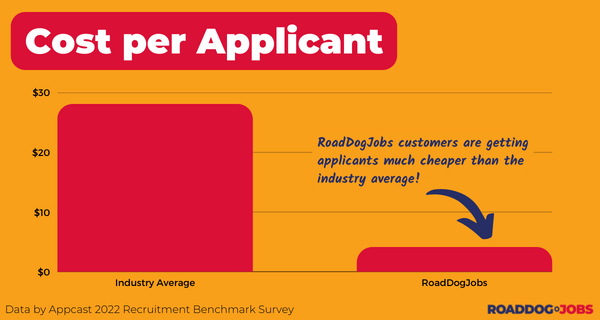
By the time a candidate clicks the apply button you’ve done all the work. You have an attractive job. You’re ready to hire.
But then that candidate disappeared.
What happened?
Application abandonment happens when a potential applicant leaves the application process without completing it. The average application abandonment is a mind blowing 92%.
That means, on average, 92% of job applications that candidates start are not completed.
Today we’re going to talk about the impact of too much friction in your hiring process. Application abandonment is one of the major symptoms of a hiring process with too much friction.
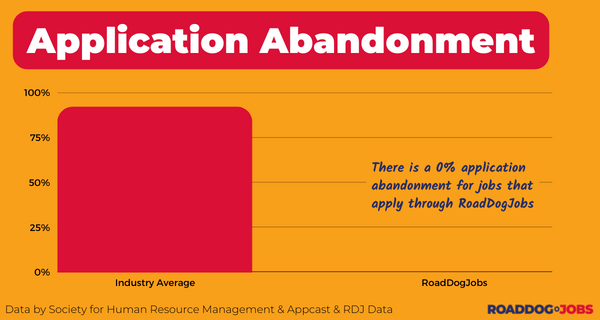
Hiring process friction is costing companies time and money in a job market where they can’t afford to lose candidates.
The good news is that you can take steps to reduce friction in your hiring process. By taking a critical look at the hiring process, most companies can solve this issue.
What does job application data tell us?
One of the metrics we track is how many applications each on our site job gets.
On average, jobs are getting a lot of applications. But they’re not all equal.
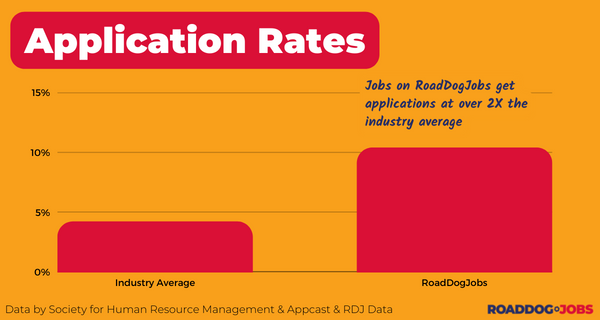
Some companies set up their jobs so that when a job seeker clicks the “Apply” button, they are redirected to that company’s applicant tracking system (ATS) to complete the process.
These jobs don’t complete the application process through RoadDogJobs. They require extra steps.
Seems like a small ask for somebody looking for a job, right?
Turns out, this step is a major problem for people completing applications.
The conversion rate from a job seeker clicking “apply” on RoadDogJobs to those that then fill out another profile on that company’s ATS can be astonishingly low.
We’ve seen a 20X reduction in people completing the process.
That means for every 20 people who wanted to apply for the job, only 1 eventually completed the application process through the company’s own ATS.
All because of the extra steps required after the candidate clicks the apply button.
Who is impacted when a job seeker abandons their application?
Not the job seeker. The job seeker is fine. They’re in high demand. They move on to the next job.
It’s the company that pays the price. Literally.
The company loses out on a potential candidate, but that’s not all.
In the process that company raises their cost per hire dramatically. This is especially true for sites that are charging companies on a cost-per-click (CPC) bases. With CPC rates skyrocketing, abandoned applications are expensive.
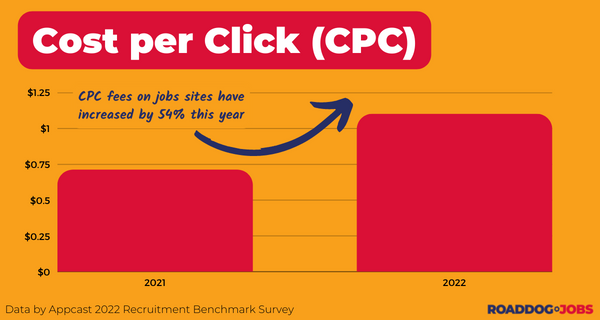
RoadDogJobs does not use a CPC model, so this situation is less expensive to our customers.
As application abandonment increases companies will also see time-to-hire increase (that’s bad) and candidate quality decrease (that’s also bad).
Why do companies introduce friction into their hiring processes?
Friction is simply an activity that the candidate must complete prior to being hired. To you it’s a process step. To a candidate it’s work, it’s effort, it’s friction.
This friction is your enemy at every step of the hiring process. Every time friction is introduced, candidates fall out of the process.
Every time candidates fall out of your hiring process, your company pays the price.
Friction shows up all throughout the process.
It shows up in screening questions, double profile completions, resume updates, interviews, emails, long job descriptions, background checks, phone calls, text messages, drug tests, certifications, reference checks, pre-employment testing, paperwork, and orientation.
Can all of it be eliminated? No. There’s no avoiding some friction. But you can – and should – take a closer look at how your processes are being impacted.
What can companies do to make reduce job application abandonment?
There are two critical questions to ask:
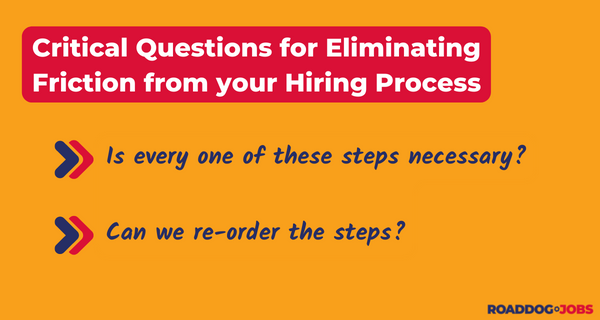
- Is every one of the steps necessary? Some steps are necessary, some are not. Figure out which can be eliminated.
- Can we re-order the steps? Sometimes making early-in-the-process steps easier can help move people through to completion of the application.
Companies that have reduced friction and timed out the introduction of friction are seeing a big benefit.
Question #1: Is every one of the steps necessary?
Start with asking whether you really need candidates to fill out your ATS profile to apply? Are you sure you can’t either a) find a way to pare down your needs or b) introduce that step at a time when a job offer is imminent?
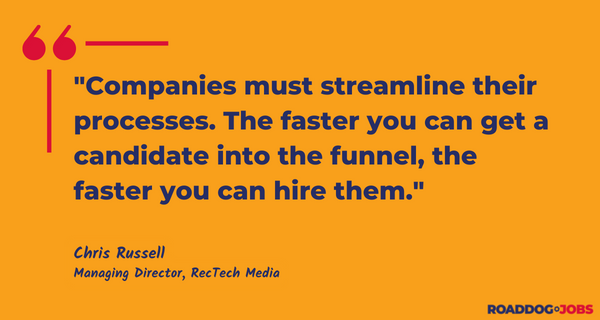
Next look at what is the information you absolutely MUST HAVE to make a hiring decision. Scrutinize the list.
When it comes to hiring a skilled trades person the list shouldn’t be all that long. Some basic information and a quick phone call can typically get you everything you need.
Then review each step of your application. Are there steps that exist solely for your internal purposes that are hurting your application rates?
Question #2: Can we re-order the steps?
A job seeker is more likely to deal with friction when a job offer seems likely.
Will a job seeker be willing to fill out your profile details when there are other (easier) options? Maybe or maybe not.
But that same job seeker would be more likely to fill out the profile after a round of vetting and they’ve decided they like what they’re hearing.
Switch the order of your steps to reduce friction.
When a job seeker clicks the apply button, get them to a completed application in as few steps as possible!
Or break up longer application steps and information requests into smaller sections.
Less friction means more applications
A review of your hiring process can make a big improvement. More applicants, less cost, better results. We want you to get more qualified applicants, so eliminate friction and watch your results improve.